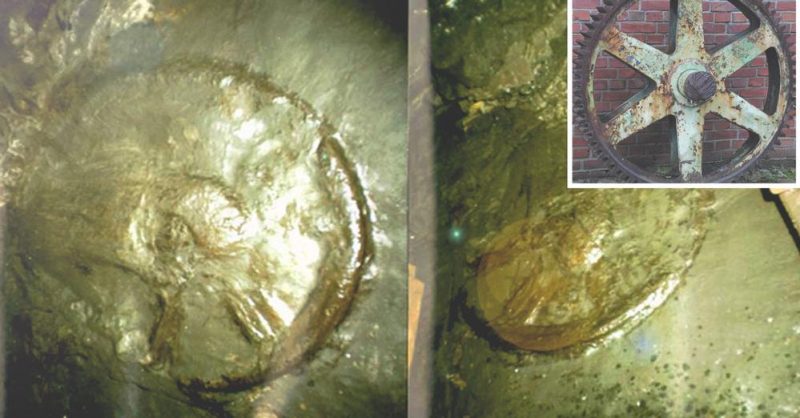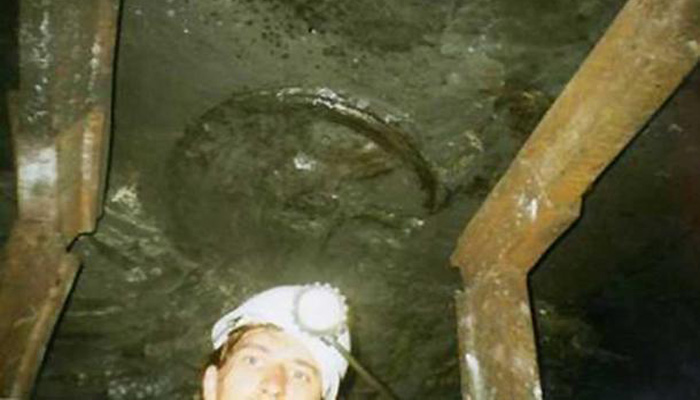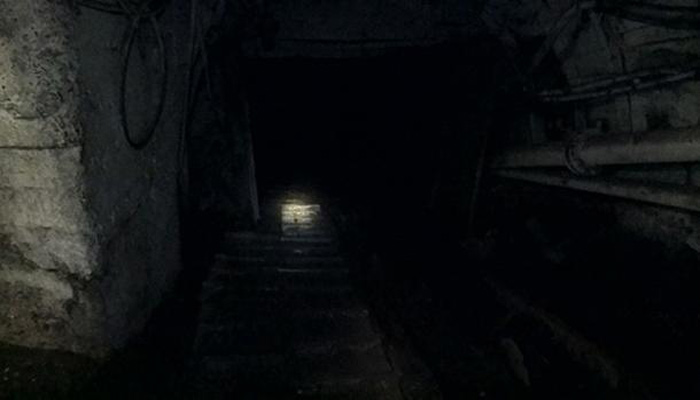
In 2008, mine workers in Donetsk, Ukraine, found a strange artifact similar to a wheel from 300 million years ago.

Embedded in a sandstone, the miners were amazed by its resemblance to that of a current wheel . However, the mystery would grow even more.
While drilling the coal coking layer known as J3 “Sukhodolsky”, some 900 meters below the surface, the workers also ran into a wheel track on them.
Deputy Chief VV Kruzhilin took photos of the footprint and shared it with the head of the mine, S. Kasatkin, who was responsible for spreading the news. The mine could not be further explored and the only evidence that remained was the images.
Unable to date the strata in which the wheel track was found, it has been observed that the Rostov region , which surrounds Donetsk, is located on a carboniferous rock 300 to 360 million years old.
A 300 million year old wheel
This means that the wheel got stuck in that place millions of years ago in the past and dissolved over time due to a process known as diagenesis. Thus, sediments lithify into sedimentary rocks, as happens with fossils.
S. Kasatkin wrote a letter, where he relates the discovery of the strange wheel:
“This finding is not a public relations action. In due course (2008), we as a team of engineers and workers asked the mine manager to invite scientists for a detailed examination of the object. But the director, on the instructions of the then owner of the mine, prohibited such talks and instead only ordered to accelerate the works of passage through this section of lava and fast ‘loading’ of the section with mining equipment.
Because of that, this artifact and the smallest one found during subsequent work were found in a tunnel blockage and could not be removed and studied. It’s good that there were people who, despite the director’s ban, photographed this artifact.
I have connections with the people who first discovered these footprints and also with those who photographed them. We have more than a dozen witnesses. As you understand, admission to the mine is strictly limited (it is dangerous due to sudden emissions) and obtaining such a permit is quite difficult.
The “wheel” was imprinted on the sandstone of the ceiling. The guys tried to “cut” the find with pick hammers and lift it to the surface, but the sandstone was so strong (firm) that, for fear of damaging a print, they left it in place. At present, the mine is closed (officially since 2009) and access to the ‘object’ is impossible: the equipment is dismantled and the given layers are already flooded ».
 Entrance of the mine.
Entrance of the mine.
Other evidence of ancient “wheels”?
This written testimony, plus the witnesses and images , remain the only evidence of the strange footprint. However, the difficulties in studying the footprint is what has caused it to be taken into account.
If the photographic evidence is legitimate, how did a man-made wheel get embedded in 300 million-year-old strata?
The existence of wheeled vehicles in ancient times has come to the fore on several occasions and in various parts of the world.
Petrified wheel tracks have been found in France, Spain, Italy, Malta, Kazakhstan, Ukraine, and even North America.
One of the best known examples is the ” Maltese Footprints “, located near the Dingli Cliffs. The grooves have become famous in recent years, drawing the attention of various theorists and researchers.
In Turkey, other strange and famous footprints can also be found. In Sofca there are some that cover an area of up to 73 × 16 kilometers . The same happens in Cappadocia , where there are pockets of footprints.
Although there is controversy about the age of these tracks, many researchers, due to the association and proximity to megalithic structures, especially in Malta, have concluded that they are extremely ancient .
The simple presence of the fossilized wheel in Ukraine certainly suggests the possibility that ancient civilizations somehow had access to a technology beyond their pre-established knowledge by history.





